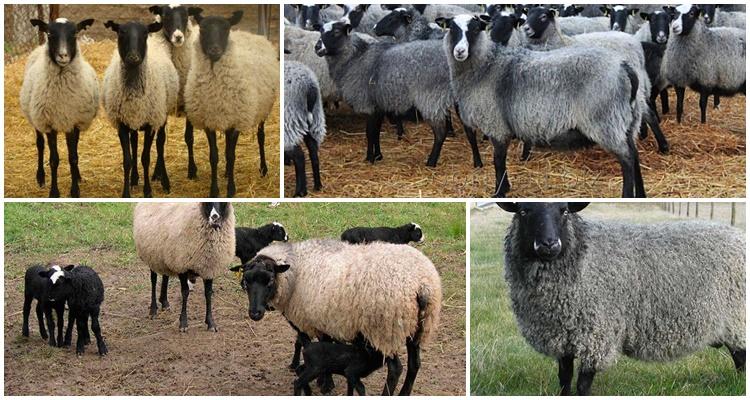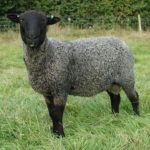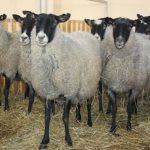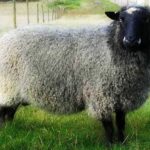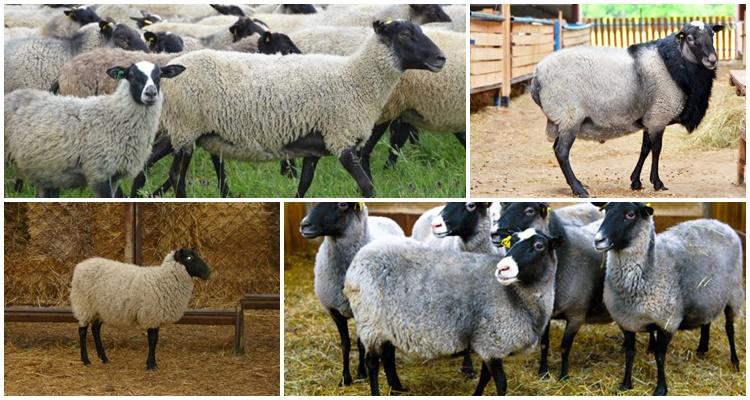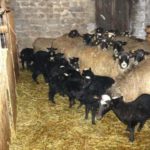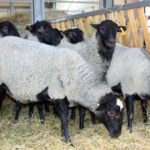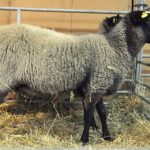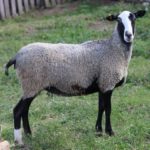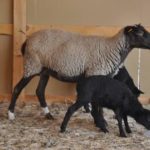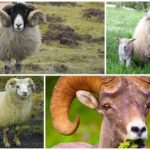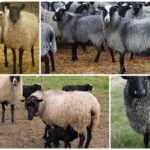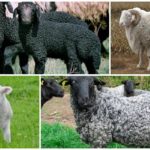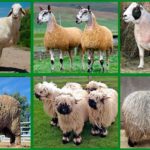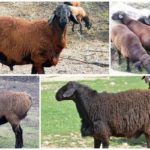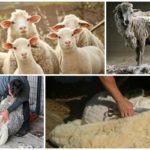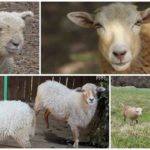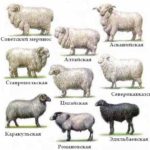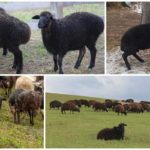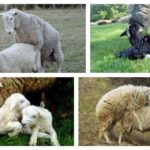Sheep of the Romanov breed are coarse-wooled cattle of the fur type of productivity. The name of the breed comes from its origin - the sheep were bred in the Romanov-Borisoglebsky district of the Yaroslavl province. Hornless breeds of local cattle were used for selection. Romanov sheep have many advantages, which is why many farmers prefer to breed them.
Origin of the Romanov breed
The breed was first mentioned in historical facts in 1802, which indicates the appearance of Romanov cattle back in the 18th century.The peasants engaged in breeding on their own, trying to breed a breed that would be unpretentious to climatic conditions, omnivorous (could exist and actively reproduce on hay and grass species), and would have good yields of meat products and wool.
Despite the fact that it was not scientists who bred sheep, the Romanov breed is considered practically the best among other Russian varieties.
Appearance and characteristics of sheep
The generally accepted characteristics remain unchanged today, although they were approved in 1908:
- strong, powerfully developed skeleton;
- polled, dry head with a humped nose, oblong skull shape;
- erect ears;
- straight lines of the spine and withers;
- the body is barrel-shaped, with round ribs;
- straight strong legs;
- tails - for sheep - 7-10 centimeters, for rams - up to 13 centimeters;
- height - about 70 centimeters;
- The average weight of rams is 65-70 kilograms, the average weight is 45-55 kilograms.
The wool contains a lot of fluff, forming braids with curls in the upper part, the wool is thick, 2600-2800 fibers per square centimeter of skin area. Newborn lambs have black hair; after a month it begins to lighten, reaching complete depigmentation by five months. There are white markings on the head and ears. Sheep are shorn three times a year, and the wool is used in felting.
Main positive and negative aspects
On the scale of Russian livestock farming, Romanov sheep do not account for a huge part of the livestock, although the breed has many advantages:
- easy care - Romanov sheep were bred as an unpretentious peasant breed that does not require special conditions for maintenance. These rams are unpretentious and almost omnivorous. Expensive feed crops and special housing conditions are not important for them, and care is not difficult;
- saving on feed – livestock are advised to graze on pastures most of the year. In winter, sheep require a regular menu, including silage and hay. To avoid the development of vitamin deficiency, it is worth adding a small amount of expensive, high-quality vitamin feed;
- high quality sheepskin - many sources claim that Romanov sheepskin is the highest quality worldwide and is priced accordingly;
- fertility - the number of Romanov sheep can increase 2.5 times in just a year due to the ability of ewes to give birth to several lambs at once;
- good meat yield - with a young lamb (7-8 months) weighing 40 kilograms, the slaughter yield will require at least 20 kilograms of pure meat mass.
Romanov and other breeds of sheep have common disadvantages - timidity, dependence on weather conditions, in particular drafts, intolerance to dampness, and susceptibility to parasitosis. The Romanov breed could rightfully become widely known if the sheep produced more wool. The yield of sheepskin per head per year is about 3.5 kilograms. For comparison, Merino sheep produce 7-8 kilograms of wool in the same 12 months.
Another disadvantage of the breed is the tendency to colds and bronchopulmonary diseases.
Due to the weak lungs of sheep, many farmers opt for other breeds, because they are afraid to keep their livestock on pasture until the cold weather, and are forced to spend money on building spacious, warm sheepfolds.
Subtleties of maintenance and care
People who have decided to start sheep farming for the first time are interested in how to properly maintain and care for Romanov cattle. As already mentioned, sheep of this species are unpretentious and do not require special conditions. They do not freeze in extreme cold because sheep have thick skin and thick hair. It is better to use clean straw or hay bedding; sawdust and peat flooring should not be used.
The Romanov breed often has health problems, parasites, the quality of the sheepskin deteriorates, and fertility decreases when kept in the same stall. Therefore, it is recommended to graze the Romanov breed livestock until the onset of frost, limiting their stay in sheepfolds only to cold winter periods.
Even in winter, sheep should be taken outside for a short time so that they have the opportunity to get some air. This will prevent bronchopulmonary diseases and strengthen the immune system.
It is recommended to graze even on depleted pastures; the main thing is to avoid flooded and forest meadows and places with marshy soil. Due to the increased moisture levels of such pastures, diseases of the digestive system of the livestock may develop. You can make artificial ones by first planting them with cereals and legumes with perennial flowering.
Feeding the breed
Representatives of the Romanov variety are unpretentious in food. They can be fed both food waste and greens and root vegetables. In the summer months, sheep confidently gain fat reserves on pastures, but it is necessary to additionally feed them with mineral supplements and a small amount of concentrated feed.It must be fresh, which has a positive effect on the quality of sheepskin and livestock meat.
In winter, it is imperative to provide the sheep with succulent feed in the form of silage and root vegetables, but the diet consists of hay (preferably alfalfa) and roughage (straw and tree twigs, which are an additional source of vitamins). The grass of clover, legumes and cereals is useful for Romanov sheep. Before serving the straw, it must be steamed.
Feeding the ewes should include concentrated feed, and the feeding rams should include nutritional supplements to improve the functions of the reproductive system.
This is important for getting healthy offspring. Flour with other types of feed is not preferable in feeding Romanov cattle, since the resulting sheepskin is the main source of sheep production; the livestock can greatly stain the fleece.
How to breed
Romanovskie are bright and prolific:
- 6-8% of ewes produce one lamb;
- two – 39-40%;
- three – 45-46%;
- four to eight – 9-10%.
Eurasians reach sexual maturity at the age of about one year. Farmers involved in breeding Romanov rams believe that it is possible to mate lambs that have reached a body weight of 70-75% of the weight of an adult sheep (at least 41-42 kilograms).
If lambing occurs three times in two years, compacted lambing is recommended according to the following scheme:
- first mating - from July 15 to September 1, lambing - from December 15 to February 1;
- second mating - from March 5 to May 1, lambing - from August 15 to October 1;
- third mating - from November 15 to February 1, lambing - from April 14 to June 1.
Immediately after birth, lambs need warmth - it is important to dry them and warm them under lamps located 70-80 centimeters from the flooring. The optimal temperature is 20 oC, humidity is 70%.Once the lamb is weaned, it will no longer require special labor-intensive care. Early weaning involves transferring to milk replacers at the age of 1-3 days after birth; after 45 days, lambs are given dry and vegetable feed.
Common diseases
Romanov sheep have an anatomical feature - the branching of a rather narrow bronchus from the trachea into the right apical part of the lung. Due to abdominal breathing, this type of livestock has reduced ventilation of the lungs, so Romanov sheep are sensitive to dampness, drafts, and sudden temperature changes, especially in conditions of unbalanced feeding and reduced immunity. Livestock often suffers from diseases of the bronchi and lungs.
Other diseases of Romanov sheep are similar to other breeds:
- pathologies of the digestive system, such as dyspepsia, gastroenteritis, tympany (bloating);
- damage by parasites (helminths, botfly larvae, fleas);
- epidemiological diseases (smallpox, plague).
To prevent epidemics, routine vaccination is carried out to help preserve livestock numbers. Treating the skin against damage by insect pests, fungal and bacterial pathogens should be done regularly.
The Romanov breed of sheep can rightfully be considered the pride of domestic selection, although, despite the beneficial advantages of this type of livestock, not a large number of foreign sheep breeders pay attention to it. Beginning sheep farmers are recommended to gain experience by breeding Romanov sheep, due to their fertility, excellent quality of sheepskin and good performance in obtaining meat products.

